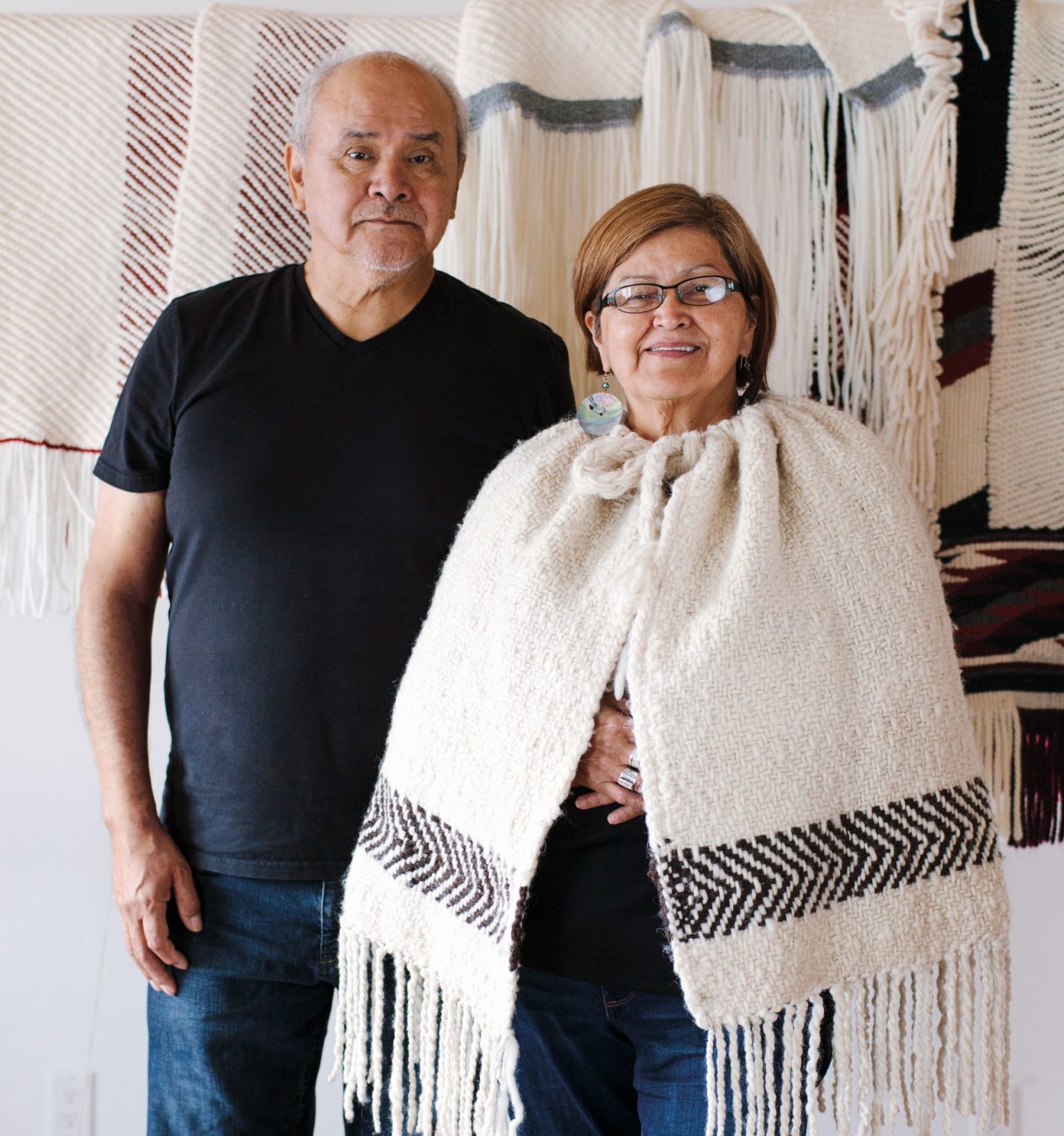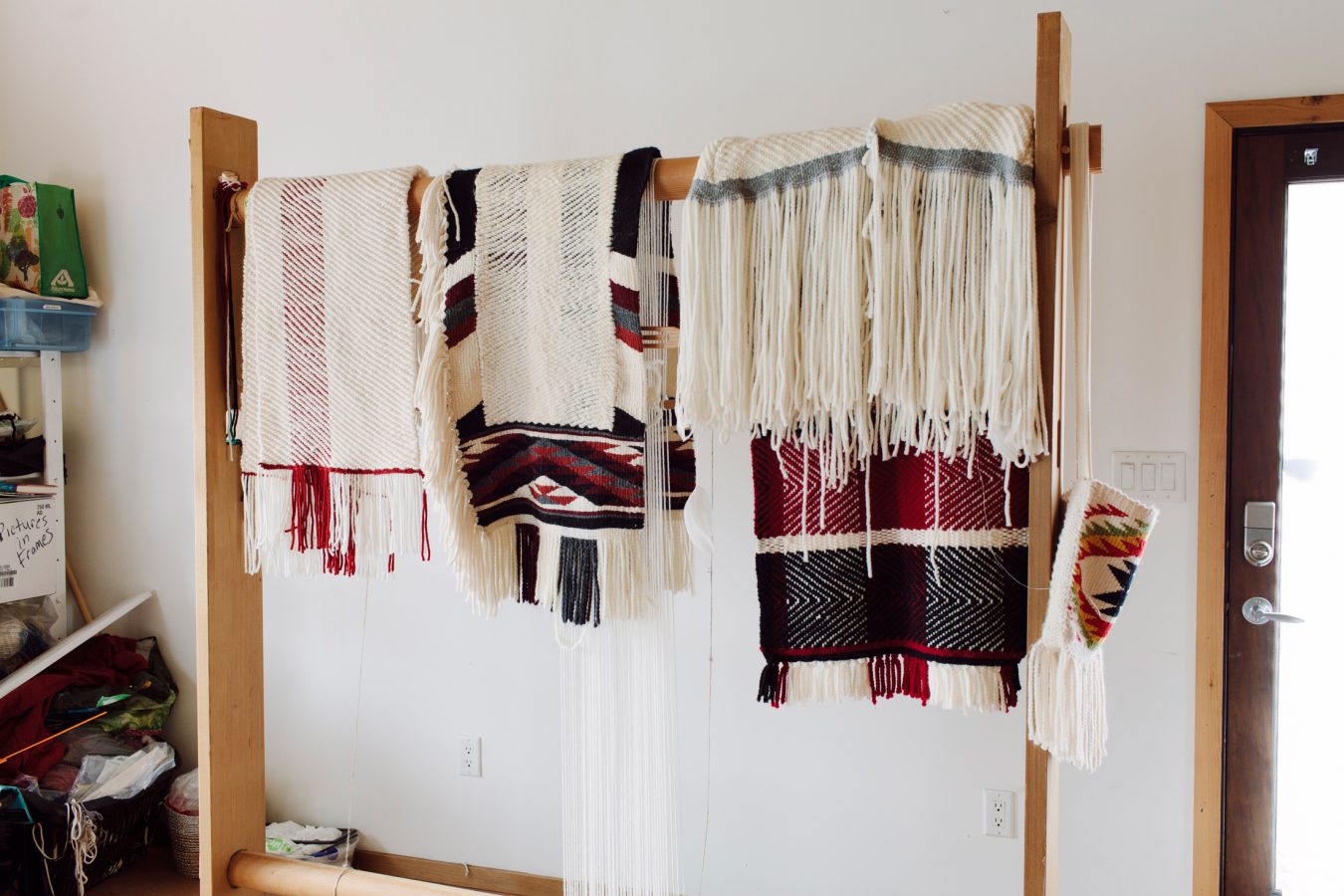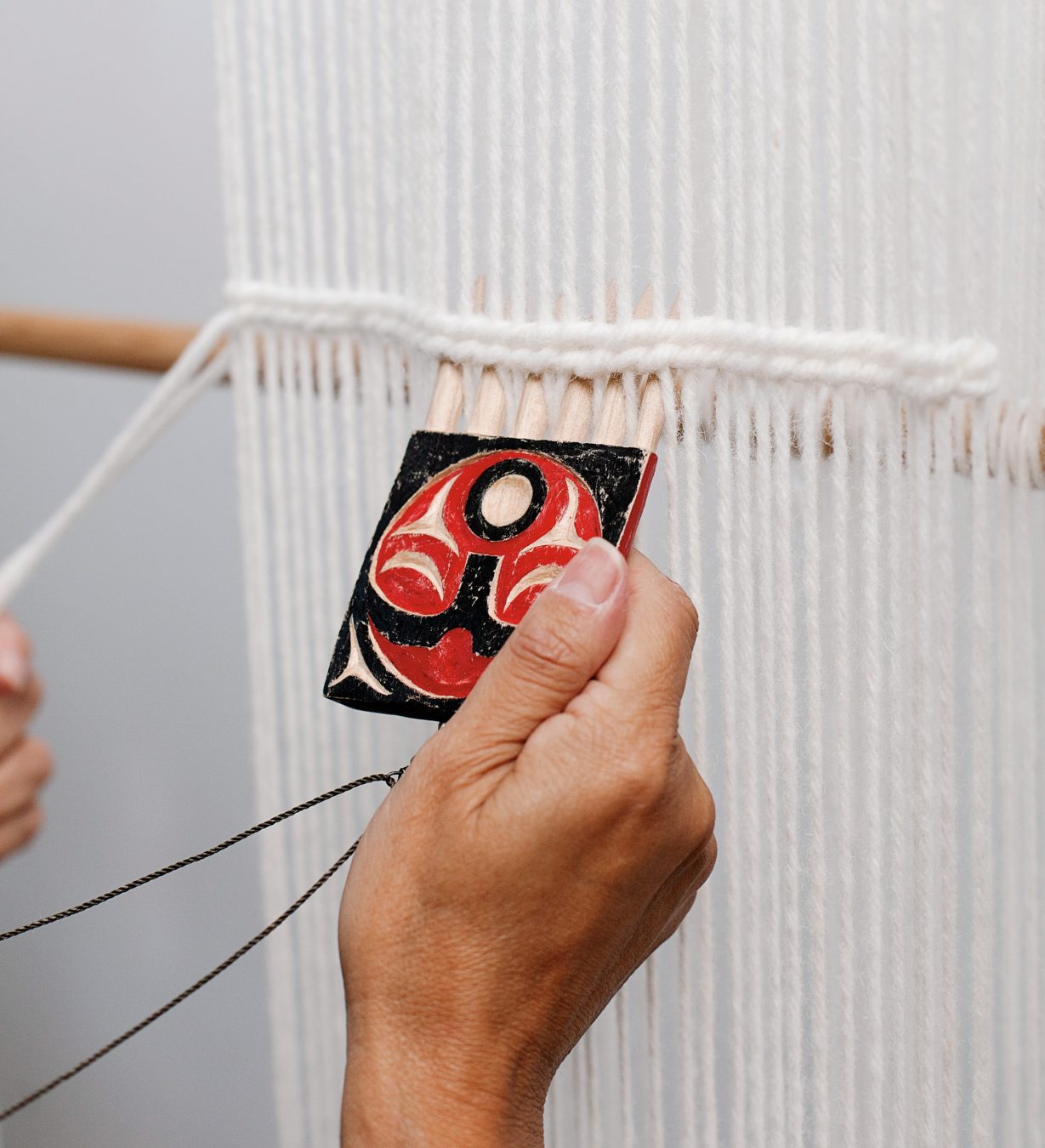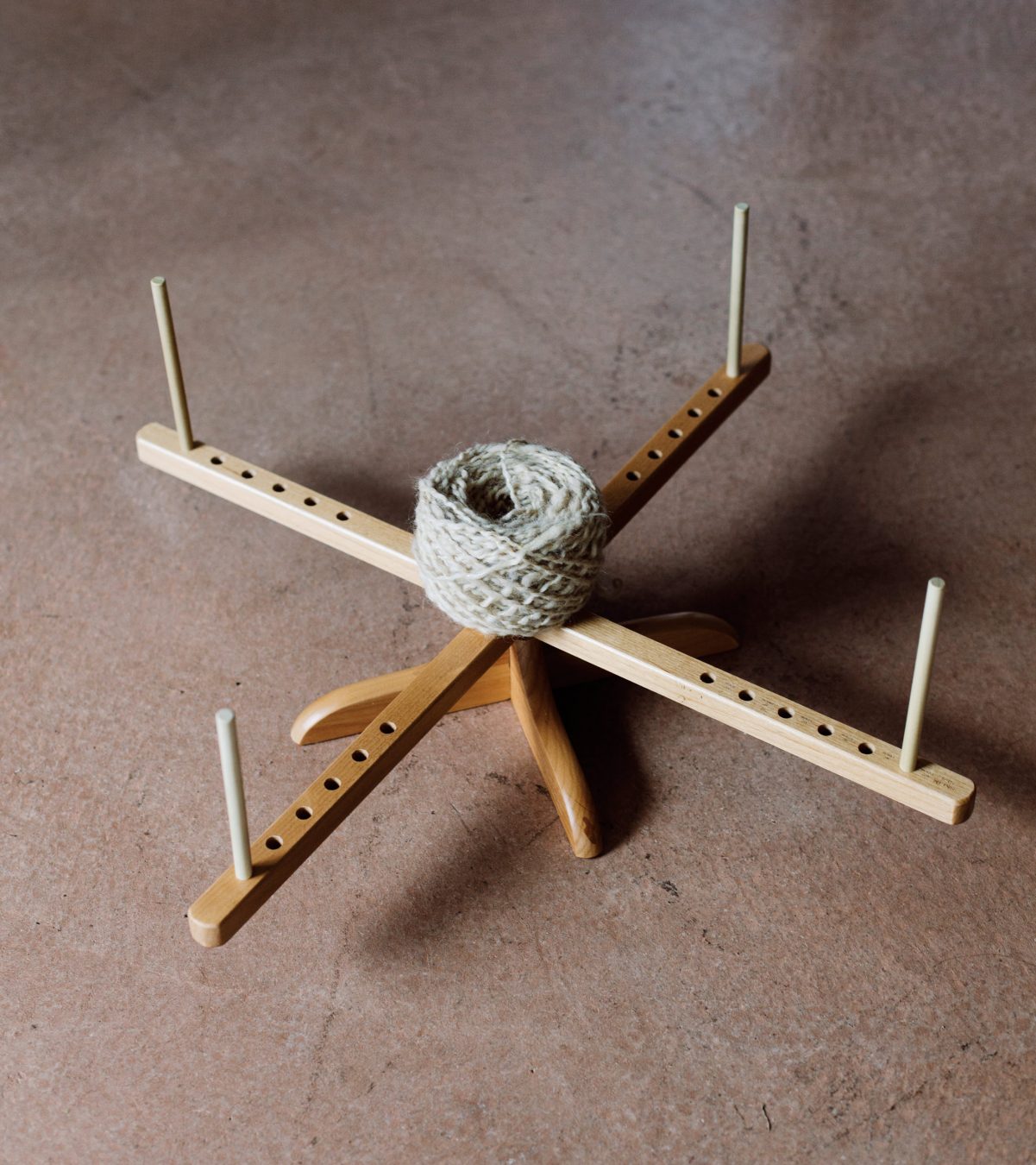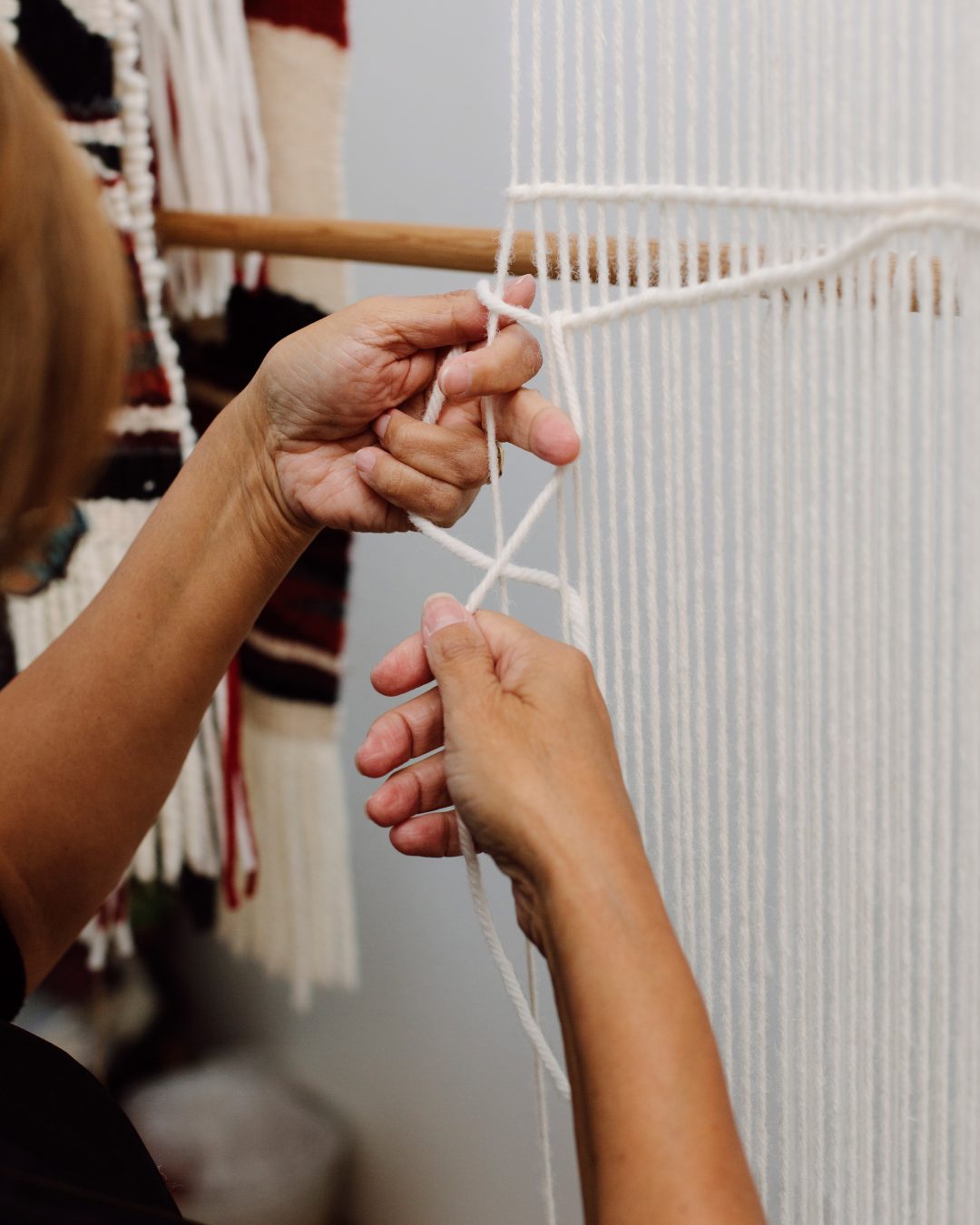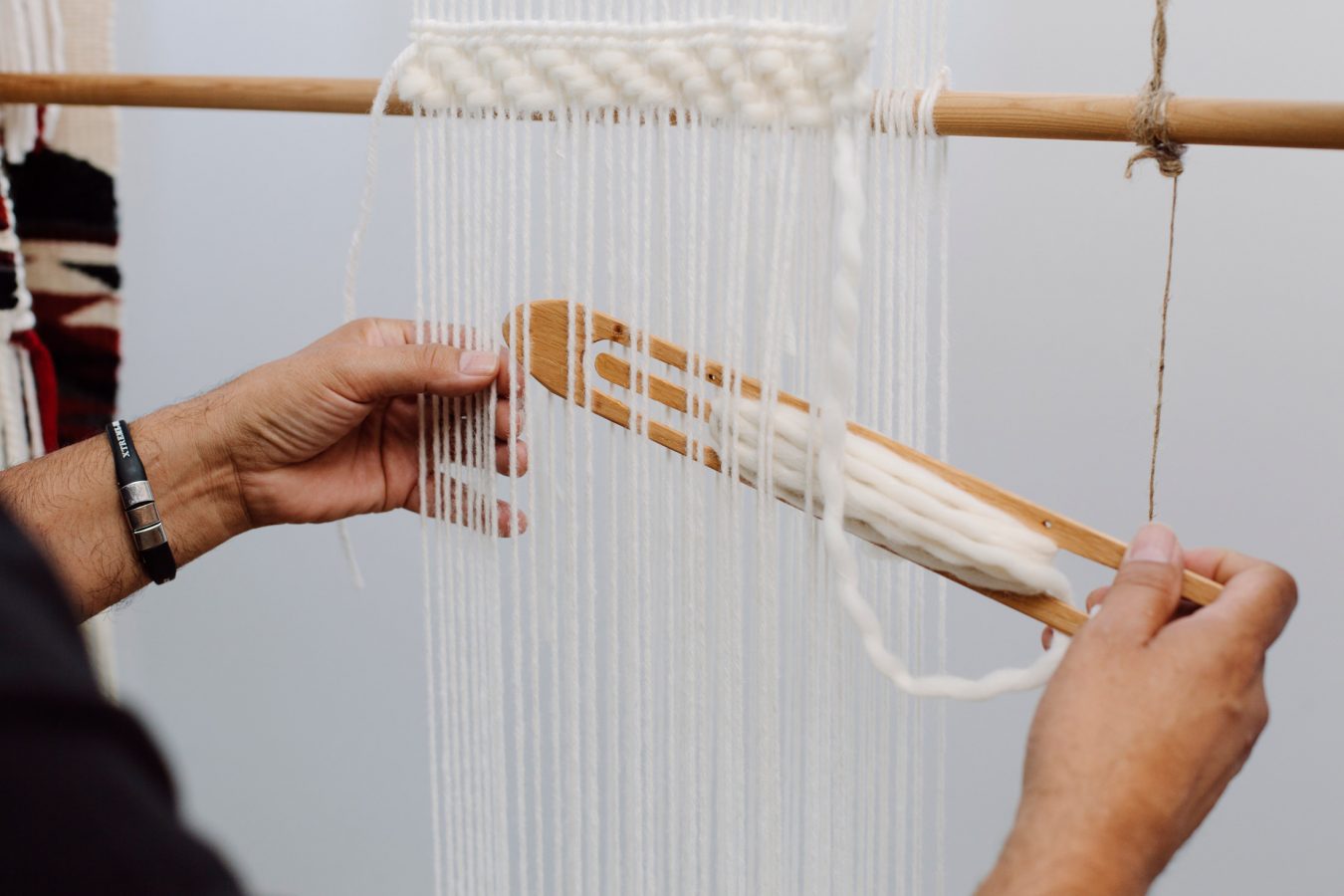In their modern studio on the Capilano Indian Reserve on the North Shore of Burrard Inlet, Chepximiya Siyam Chief Janice George and her husband Skwetsimeltxw Willard “Buddy” Joseph display a black and white photograph. Taken more than one hundred years ago, it captures the chiefs of several B.C. First Nations gathered in Vancouver before travelling to England to meet with King Edward VII and express concern for their people’s shrinking land base. Impossible to miss in the photograph is that each chief is clad for the important journey, shoulder to ankles, in a uniquely woven blanket.
A century, while just a wrinkle in the long history of the Squamish First Nation, was long enough to almost wipe out the craft of Salish blanket weaving from their people—that is, before George and Joseph made it a living art again.
“Nobody was doing it,” George explains. “Since I was a teenager I saw the pictures of the chiefs wearing their ceremonial robes, and I always wanted to be able to weave robes, but there was one person I knew who was a weaver in our nation at that time, and he wasn’t teaching.” The opportunity to learn didn’t present itself until several decades later when, at a basket weaver’s gathering in 2003, George met Salish weaver Susan Pavel. “Susan had a weaving hanging up and I said, ‘Is that for sale?’” George recalls. “I was just coveting it. She said she could sell it to me or teach me how to make it for the same price.”
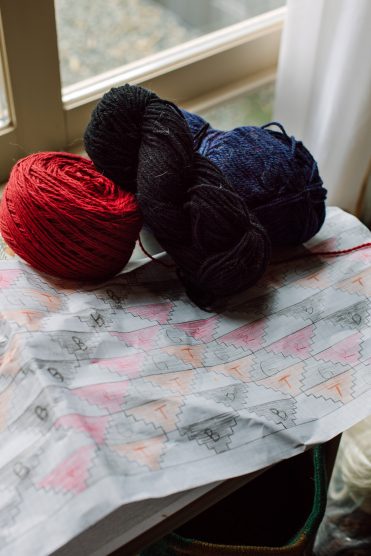
In July 2003, Vancouver won the bid for the 2010 Winter Olympic Games. In October that same year, George and Joseph headed to Washington state to take their first Salish weaving class under the tutelage of master weavers Pavel and Subiyay-t Bruce Miller of Skokomish. “I was worried about how we were going to identify ourselves [during the Olympics]. When the world comes, how were we going to identify ourselves as Squamish people?” says George. “Squamish weavers were able to dress our people in Salish robes, clearly identifying our unique place in the world.” Additionally, she notes, the annual Canoe Journey was quickly growing into the 10,000-strong event it is today, and the Indigenous people of the Pacific Northwest coast were “really hungry for the culture, really hungry for continuing the traditions, and especially to have something to wear.”
To date, George and Joseph, along with their students, have taught more than 2,500 people to weave. In summer 2017, the couple co-published the book Salish Blankets: Robes of Protection and Transformation, Symbols of Wealth, with Leslie H. Tepper, curator of Western Ethnology at the Canadian Museum of History, to preserve what they’ve learned for generations to come. “We had to be careful about what we put into the book,” says Joseph. “There’s a lot that’s sacred—probably 99.9 per cent isn’t in the public domain. That’s something that works for our people and has really contributed to our survival as Indigenous people. There’s always fear of exploitation of our spirituality for profit, but we do share a little bit.”
George adds: “I like the way Buddy puts it: that our ancestors went through the keyhole of residential schools and disease and everything else for us to be where we are today. When we teach, we honour those ancestors and let people know what our people went through for us to be here today, not just surviving but thriving.”
Of course, there are still hurdles. Materials are a buzz topic among Indigenous weavers eager to authentically reinstate the art, because their ancestors didn’t have the commercial sheep’s wool that artisans use today. George recalls a conversation with a Navajo woman while the two were artists-in-residence at the Institute of American Indian Arts in Santa Fe: “She said, ‘I’m traditional, but I’m urban. I don’t have anywhere to raise sheep.’”
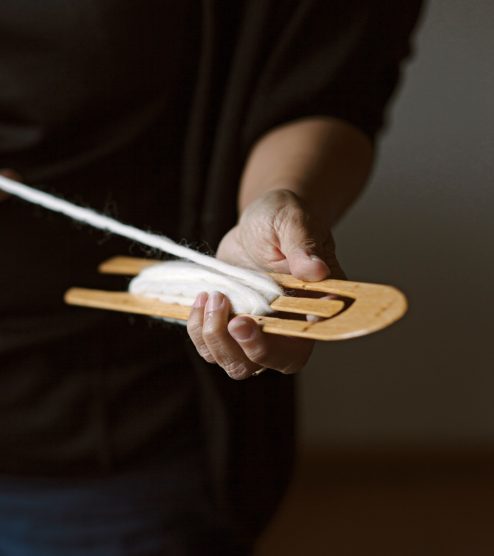
Then there’s the physical act of weaving itself, an exercise in reverse engineering—without the luxury of disassembling artifacts. Here, Joseph’s background in math and construction comes in handy (he’s former department head for housing and capital projects on the Squamish reserve). “We were taught the three primary techniques in weaving, and we mastered those, and we wanted to get into the next level of teaching our students—we were calling it advanced geometric designs—but there were no patterns available,” he explains. “Because of technology, we can zoom in on old photos and count the number of warps to create complex patterns. We travelled throughout Europe and North America to visit institutions like the Smithsonian and got right down to looking at those weavings, right down to the stitch, to figure out how those weavers created those designs. If there wasn’t that [historic] interruption, we could have spoken to the weavers who did those weavings and it just would have been so special, but the best we can do is interpret them, honour the ancestors, and continue the story.”
Salish weavings are said to have a pre-existence in the supernatural realm, brought into the material world through ancestral guidance. They are symbols of purity, George explains, with love, protection, and prayers for good energy woven into each piece. “Everybody in the world has a weaving history, everybody,” George says. “The techniques are similar, but what makes it unique is that a Coast Salish person wove it, and the wearer understands the significance of the teachings behind it.”

